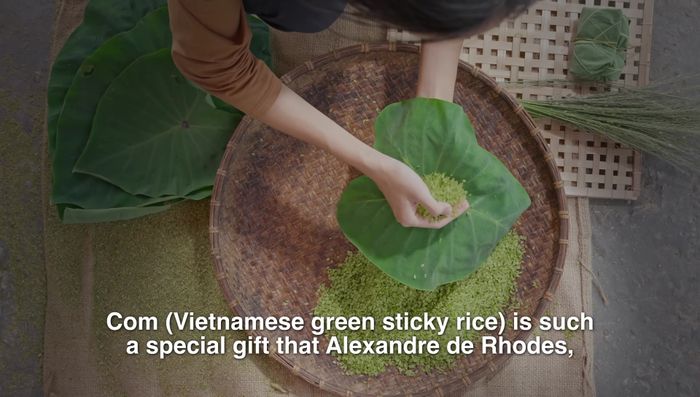Cốm, or Vietnamese green sticky rice, is far more than just a food; it's a taste of autumn, a whisper of tradition, and a testament to the artistry of Vietnamese cuisine. This unique delicacy, made from young, unripe glutinous rice harvested at its peak freshness, boasts a subtly sweet and grassy flavor unlike any other. For centuries, cốm has held a special place in Vietnamese culture, enjoyed as a royal treat and a symbol of the harvest season. Its delicate texture and distinctive aroma make it a truly unforgettable culinary experience, captivating both locals and adventurous food enthusiasts alike.
The preparation of cốm is a labor of love, a process that requires patience and precision to achieve its perfect balance of flavors and textures. From the careful selection of the rice to the meticulous roasting and pounding, every step contributes to the final exquisite product. Ready to embark on this culinary journey and discover the secrets behind crafting authentic cốm? Let's delve into the step-by-step guide below.
Tools Needed
- Mortar and pestle
- Sieve
- Pan
Ingredients
- name: Glutinous rice (sticky rice)
- amount
Step-by-Step Instructions
Step 1. Sourcing and Preparation of Young Glutinous Rice
- Harvest young, unripe glutinous rice grains. (This step is crucial and not easily replicated at home; sourcing pre-prepared young rice is recommended)

Step 2. Cleaning and Drying the Rice Grains
- The rice undergoes a process of thawing and winnowing. (This traditionally involves careful sun-drying and threshing to remove the outer husks, leaving only the fragrant green kernels.)

Step 3. Roasting the Green Rice
- Roast the cleaned green rice grains in a pan over medium heat, stirring frequently to prevent burning, until they become fragrant and slightly toasted.

Step 4. Cooling and Serving (Optional: with Red Persimmons)
- Allow the roasted rice to cool completely.
- Traditionally, Cốm is served with red persimmons, symbolizing the balance of Yin and Yang in Eastern philosophy. (Optional, but recommended for cultural context).


Read more: Vietnamese Sticky Rice with Gac (Red Melon) - Easy Recipe
Tips
- The success of this recipe relies heavily on the quality and preparation of the young glutinous rice. Sourcing high-quality, pre-processed young rice is the most practical approach for home cooks.
- Be careful not to over-roast the rice, as this will result in a burnt taste and loss of the desirable green color and fragrance.
- Enjoy Cốm as a standalone snack, or incorporate it into other dishes as a unique and flavorful ingredient.
Nutrition
- N/A
FAQs
1. Where can I buy authentic Cốm?
Authentic cốm is best sourced directly from regions known for its production, such as the Red River Delta. You may also find it in specialty Asian grocery stores or online from reputable Vietnamese vendors.
2. Can I make cốm at home?
While traditionally a labor-intensive process, you can find simplified recipes online. However, achieving the exact texture and flavor of authentic cốm might require practice and access to specific young glutinous rice varieties.
Making cốm is a journey that connects you to Vietnamese culinary heritage, offering a rewarding experience for both the maker and the eater. From its subtle sweetness to its captivating aroma, this royal treat is a testament to the beauty of simple ingredients transformed through skillful preparation. So, savor each bite of cốm and appreciate the rich history and cultural significance woven into every grain.
